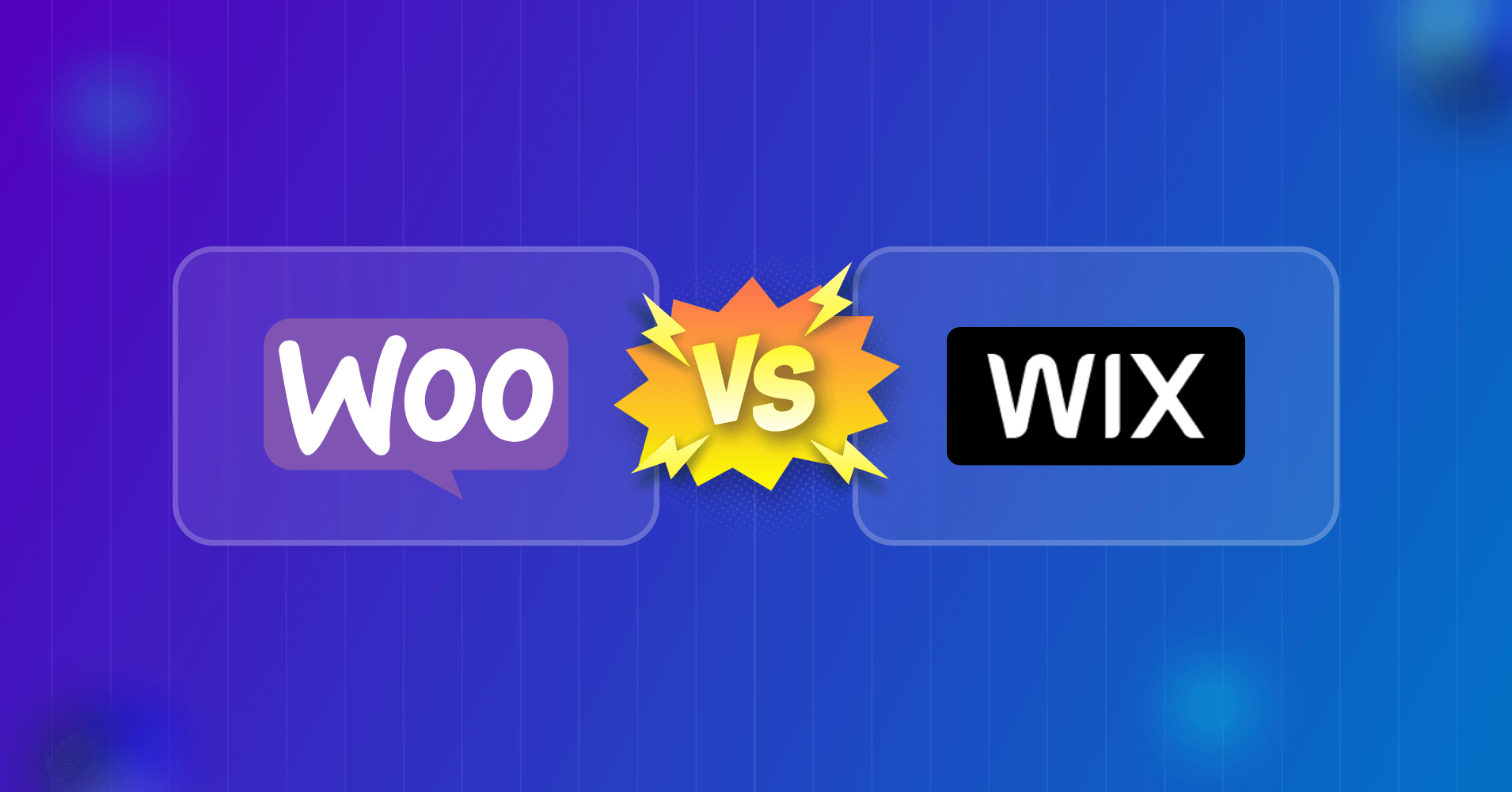
Wix vs. WooCommerce – Key Differences and the Best Platform for eCommerce
Share :

We will never spam you. We will only send you product updates and tips.
Creating an eCommerce website is a daunting task, especially when faced with the myriad of platform choices available.
But I have narrowed it down to two platforms and called it Wix vs. WooCommerce.
In this detailed comparison, I’ve dissected two prominent contenders. Both Wix and WooCommerce are known for their rich features and extendable functionalities.
From ease of use and design flexibility to SEO-friendliness and pricing structures, I explore the nuances of each platform.
Let’s start with the introduction of both platforms.
What’s Wix?
Wix is a website builder especially made for beginners in mind. Creating websites with this builder requires no coding knowledge. Wix offers a hosted solution so you don’t have to worry about external hosting.
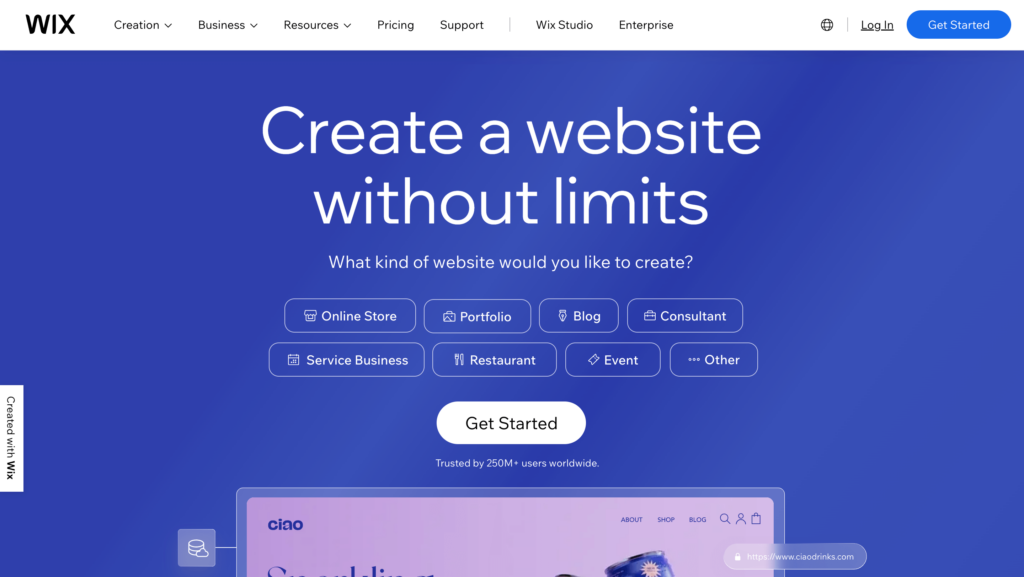
Moreover, the readymade templates, easy page builder, and integrated apps will help you build your eCommerce site without spending too much time.
What’s WooCommerce?
Now talk about WooCommerce.
It’s an open-source plugin, currently empowering 6.6 million eCommerce sites worldwide. It was started as WooThemes in 2008, and acquired by Automattic (WordPress) in 2015.
Anyway, WooCommerce is the most popular eCommerce platform with so many powerful features to organize your shop.
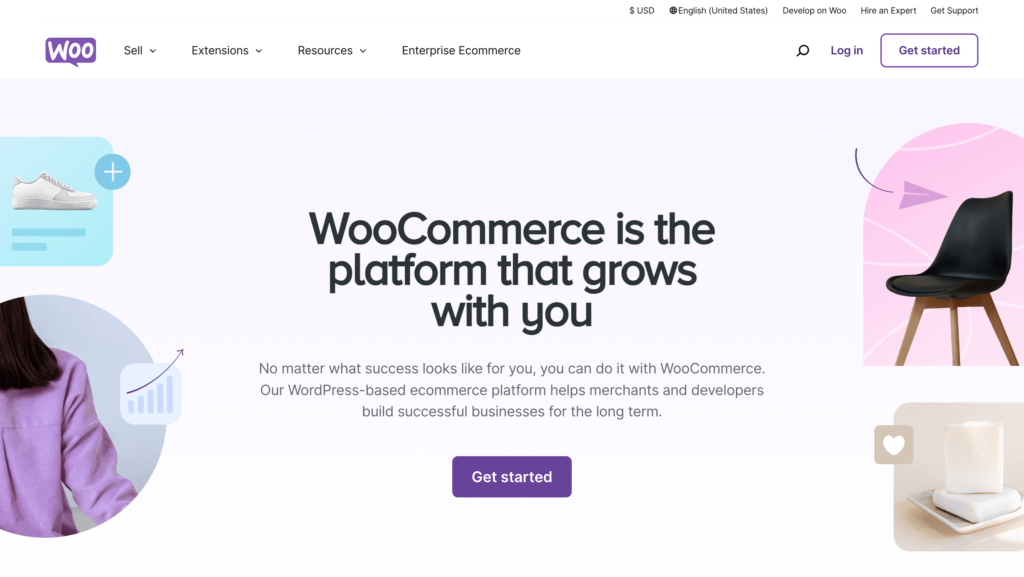
You can sell products and services, manage inventory, get paid, manage shipments, and do a lot of tasks. However, WooCommerce is a free plugin, meaning you don’t have to pay any bucks to install the software.
If you want to extend the functionalities (which you need eventually), you have to pay for the addons. WooCommerce also offers hosting that requires you to pay for the service.
We have a detailed guide on how to get started with WooCommerce from scratch.
Must-have features to choose an eCommerce platform
At this point, I want to talk about some basics. Before choosing an eCommerce platform, you need to check out the following features. These are required features an eCommerce tool must offer.
User-friendliness
Your online shop should be user-friendly. People should find everything easily, without spending much time and facing any sort of hassles. The look should be clean and appealing.
Your store is not the last option. Right? If users don’t feel satisfied they’d change their mind instantly and go to another store. How can you make your store less complex and more user-focused?
There are many ways you can achieve that. You can start with a simple look that pleases the eye. Make it easy to find products with proper search bars and categories. Also, make sure your site is responsive.
Your site loading is crucial, so make sure your hosting is top-notch.
Search Engine Optimization (SEO)
By choosing the right platform, anyone can make a high-performance eCommerce store. That’s not the hard part.
Placing your site on top of search results is the ultimate game you must win. Therefore, you should look out for tools that offer search engine optimization with easy options.
The platform should present options for basic SEO optimization that can help you leave the manual implementation of on-page SEO.
Internal search
Users should find products with less labor. One option can make that easier with a proper search facility.
To make the customer’s journey smooth, you need to think about giving them fewer steps to complete.
Users won’t go to a product by manual checking; that’s not optimal. Rather, a comprehensive search functionality makes the path easier.
If you keep the site search, customers can find their products easily, no matter what you’re selling. They’ll drop their keywords and go to the desired results.
If you think about conversion rates and want to improve user experience, consider keeping a functional search bar.
Customer support
Do you know that 82% of customers spend more money on companies that offer better online services?
Customer support is a vital part of your eCommerce shop. Your customers expect prompt help during their buying journey.
So it’s a decisive factor for better sales is providing better customer support with extreme care.
24/7 active support, live chat, and detailed documentation are some crucial components of customer support.
While choosing a platform, check out what ways it offers to manage support and help.
Multilingual ability
Because of the global audience, you should welcome diversity. Let’s start with being multilingual. Offer as many languages as possible if you target globally, or languages based on your audience country.
Offering services and products in different languages simply boost your conversion as users can understand what you offer in their own language.
Take a look at your eCommerce platform and find out if it has translation capacity. If it had the default function, it would be much better.
Multiple currency options
Similarly, having multiple payment options is no more a luxury. It’s a kind of necessity.
Your customers come across different sides of the world or different sides of the country. Everyone prefers their own payment methods.
That’s why your eCommerce platform should accept multiple currencies with multiple payment methods.
Mobile-friendly website
Is it necessary to make your website mobile-friendly?
Yes, very much.
In 2023, smartphone users increased to 6.84 billion.
People no longer use smartphones to chat or to listen to songs only. They do pretty much everything using that small device.
If you really want to target a larger audience, make sure your site is perfect for tiny screens. Your customers must experience great while browsing via their mobile phones.
Besides, search engines give importance to responsive sites. It’s an important ranking factor.
So, make sure your site is ready to capture the mobile audience, which simply means you’ll get more traffic and sales.
Wix vs. WooCommerce – head-to-head comparison
I’ll talk about the detailed comparison between the two platforms based on some essential parameters.
Ease of Use
It simply means how easy the platform is to use. Is there a high learning curve? Is the tool usable by beginners? How’s the UI and overall structure?
WooCommerce
WooCommerce is easy to use. Even new users, having no coding experience, can make their store ready by spending some time.
That being said, WooCommerce has a steeper learning curve. Although you can do everything by yourself, you’ll get a little opportunity to modify it in detail.
But, yes, if you’re an expert developer, you can customize a lot. Another option that will make your experience better with WooCommerce is using plugins. I’ll talk about it later.
Let me talk about another downside. When you’re updating your content you can’t see the live version on the same page.
You have to go to the preview and come back again to the page editor.
I’ve mentioned some drawbacks, but I haven’t come to any conclusion that WooCommerce is hard to use. I just wanted to present the real scenario.
Above all, WooCommerce is easy to use because any beginner can start with it and make their store ready. Everything is self-explanatory.
On top of that, you’ll get tons of resources online that teach you how to create and customize your online stores with WooCommerce.
Wix
Wix helps users build eCommerce shops with sweet and easy options. Just sign up for the package, pick your design, and you’re done.
You don’t have to learn anything. Following the default instructions can lead you to your store.
Even a newbie can get started with Wix without external help and create their pages via easy drag and drop. The intuitive WYSIWYG (What-You-See-Is-What-You-Get) editor lets you see all the “live” changes as you play around with the options.
Beginners can start building their shop with the WYSIWYG editor and see the changes live on the same page, unlike WooCommerce.
Although it’s easier to edit, you’re bound by the limitations of templates. The drag-and-drop editor lets you create various sections for images, buttons, etc.
Themes and Design
We’ll discuss themes and design options available in both Wix and WooCommerce. The more themes you get, the better your site can be. Also, more design options will help you make your site more trendy.
WooCommerce
You’ll feel really at home with WooCommerce since it offers a plethora of customization and design options.
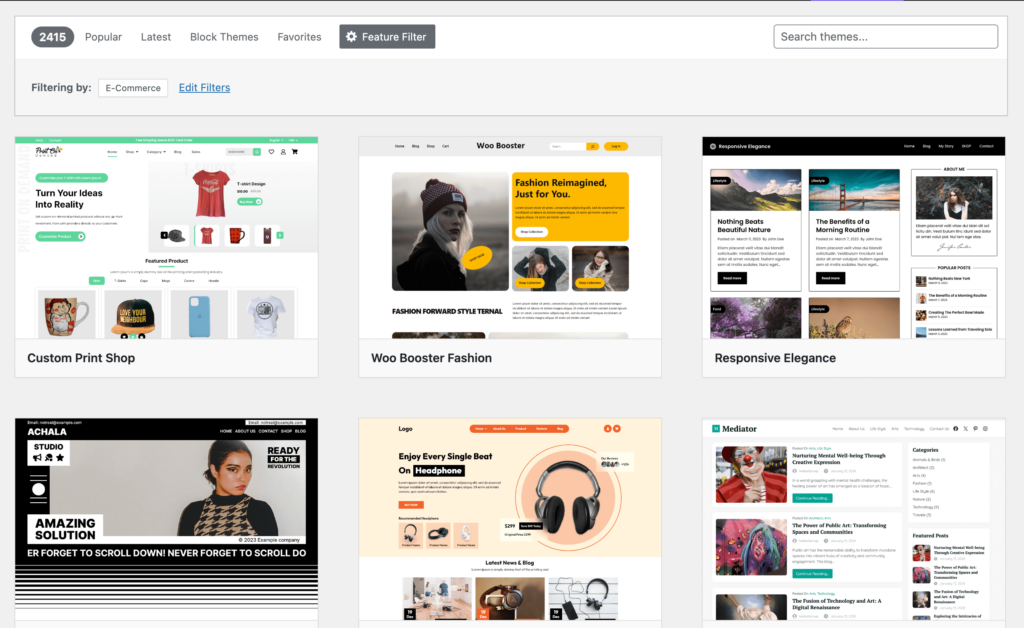
From the huge theme directory to WordPress’ Gutenberg editor, you can enjoy limitless freedom, not to mention the exciting store builder.
The benefit of the ready theme is anyone can choose their favorite design and give the store the look they want.
If you know how to code, it will give you added benefits because you can add custom functionalities and extend the power of the theme.
Here’s another amazing part. You can start with a free theme for your store. There are tons of them. And when you become big, you can opt for a premium option.
Wix
Coming to Wix, it offers 800+ templates based on multiple categories so that you can use them for any kind of business you own.
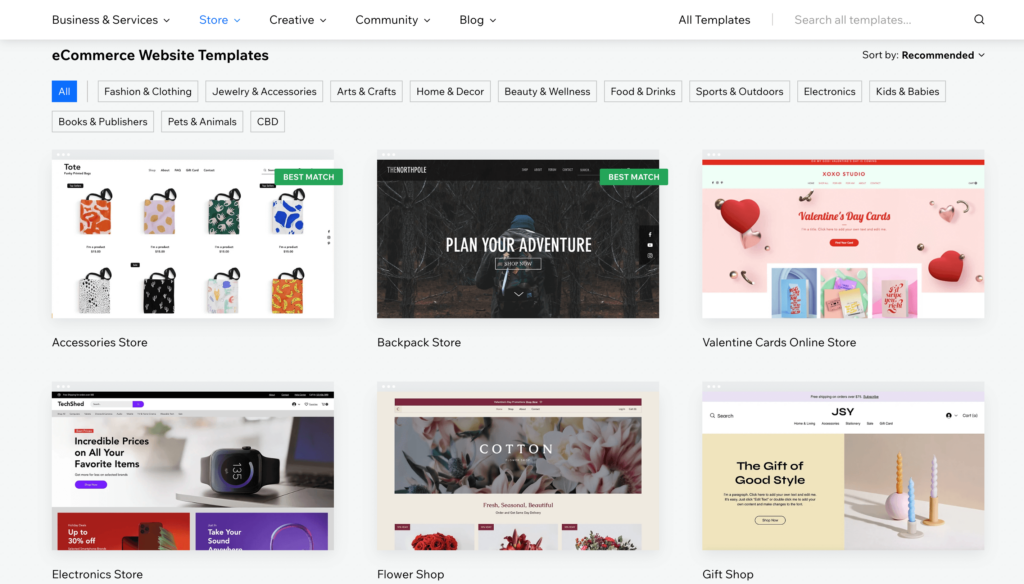
These themes are free, coming with the package you choose. You can first check the look and decide whether they can be fit for your business.
Well, another good point is that themes offered by Wix have standard features and are capable of adjusting to any business category.
So, you don’t have to look too much to find the right theme.
Unlike WooCommerce, you don’t enjoy the flexibility of customizing your themes’ code if you have technical knowledge.
Plugins or apps
Plugins and applications work the same. While WooCommerce offers addons known as plugins, Wix presents extensions known as applications. That’s the basic difference between Wix vs. WooCommerce in terms of extra tools. With these tools, you can simply add more power to your platforms.
WooCommerce
WooCommerce is a WordPress plugin yet it offers extensions to accomplish your job. These addons are free and paid. You can get them from the WooCommerce website, WordPress.org, and various other websites.
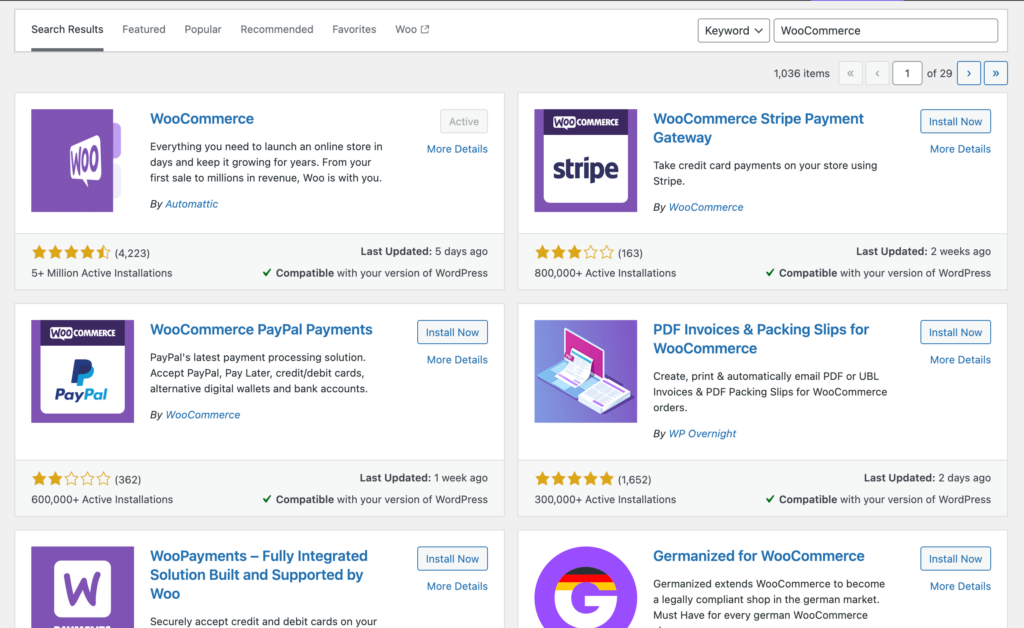
What do these extensions do?
They help you automate tasks and make your jobs a lot simpler. You can use the addons for custom buy buttons, shipping features, marketing, UX, and more.
Another thing is that WooCommerce is an open-source platform, so anyone can create themes and plugins around WooCommerce. That’s why it’s recommended to check thoroughly before choosing a plugin.
Wix
Wix also offers a set of applications although the library is not as big as WooCommerce.
Since Wix is not an open-source platform, only its core team develops the apps and adds them to the store.
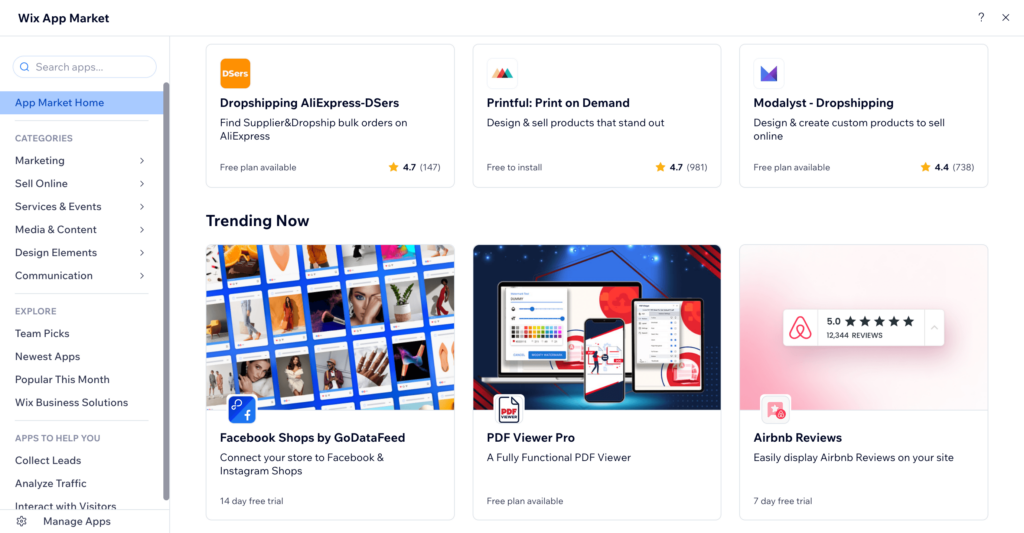
So, you can expect better quality here, but the total number fails to touch the humongous collection offered by WooCommerce.
Wix apps are built to improve your experience while building a website. The additional features are meant to allow you to do more.
You can install the apps you require based on your needs and start enjoying them instantly. So, this part works slightly differently from WooCommerce.
SEO for eCommerce
As I have mentioned before, SEO is the most important factor in ranking your site on search engines, you need to see how your platform performs against it.
For SEO, both WooCommerce and Wix depend on third-party apps and plugins.
WooCommerce
WooCommerce is a WordPress plugin, so it practically adapts best practices for SEO since WordPress itself is an SEO-friendly system.
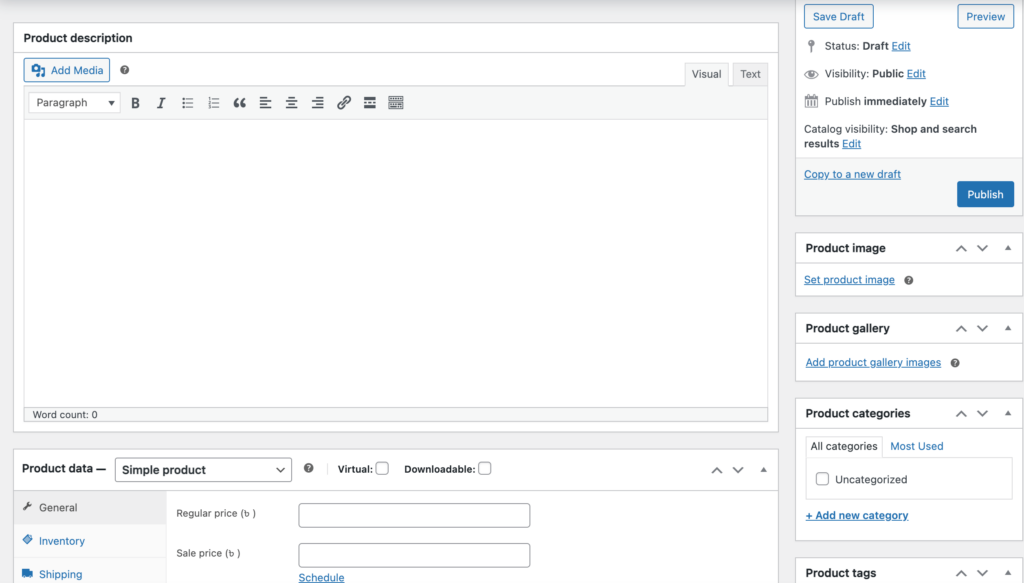
Moreover, you can use any WordPress SEO plugins to ensure your site is optimized for search engines.
There are many tools to implement SEO, including Yoast, RankMath, and SEOPress.
You can install any plugin and optimize metadata, product description, title, image, internal linking, and more.
Wix
On the other hand, Wix also has an SEO-friendly environment for creating eCommerce shops. With the SEO wizard, users can optimize their website along with getting tips for doing better.
For on-page optimization, you can edit titles, meta descriptions, image alt tags, and so on. There’s a free Site Booster app that can help you optimize SEO and increase the chance of ranking.
Mobile optimization
There’s no alternative to keep your site mobile-friendly. Since the number of smartphone users is growing largely, you should care about these users.
WooCommerce
Usually, WooCommerce themes come with mobile-friendliness by default. All you have to do is choose a responsive theme and you’ll be all okay.

Before selecting a theme for WooCommerce, just check whether it appears smoothly on mobile devices. You can easily look at it from your mobile phone.
A responsive theme will work nicely and squeeze the site content to fit on the smaller screen, while buttons work properly and media loads fluently.
Wix
Well, Wix claims that their sites are mobile-optimized naturally. Whether it works automatically or not you have the opportunity to edit the design on mobile view.
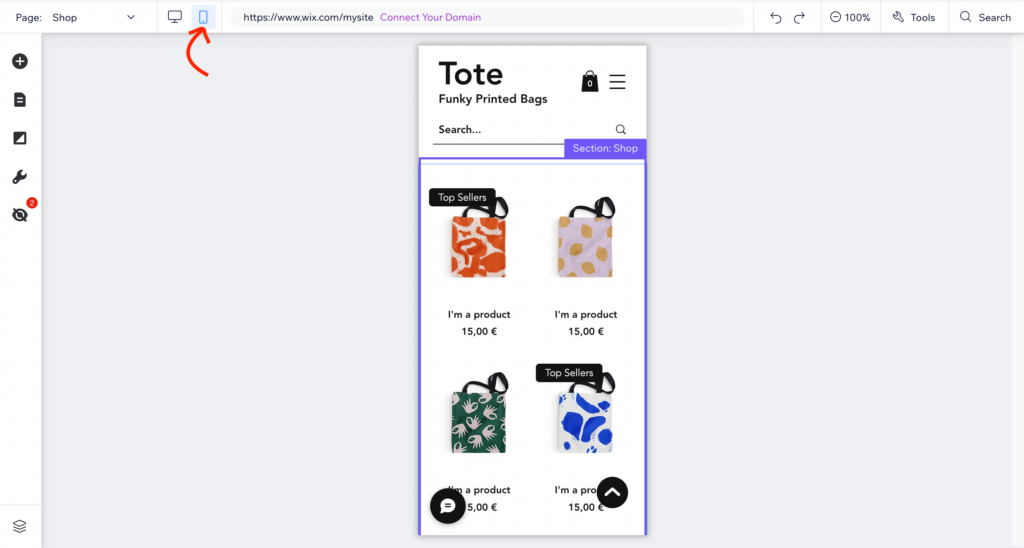
To do that you have to follow some steps:
- Visit your Wix dashboard
- Go to the “Edit Site” from the top-right section
- It will take you to the site editor
- Now click the desktop icon to find more options
- Click Mobile and the Wix mobile editor will open up
- Click various sections to customize designs
Generating product pages
Product pages are the most crucial part of an eCommerce site. So, during your research, evaluate each platform on how they perform on product page creation.
WooCommerce
Product creation and management are easy with WooCommerce. Besides, users can import and categorize products efficiently.
Not only that, even users can upload as many photos as they want, resulting in a successful store ready in quick efforts.
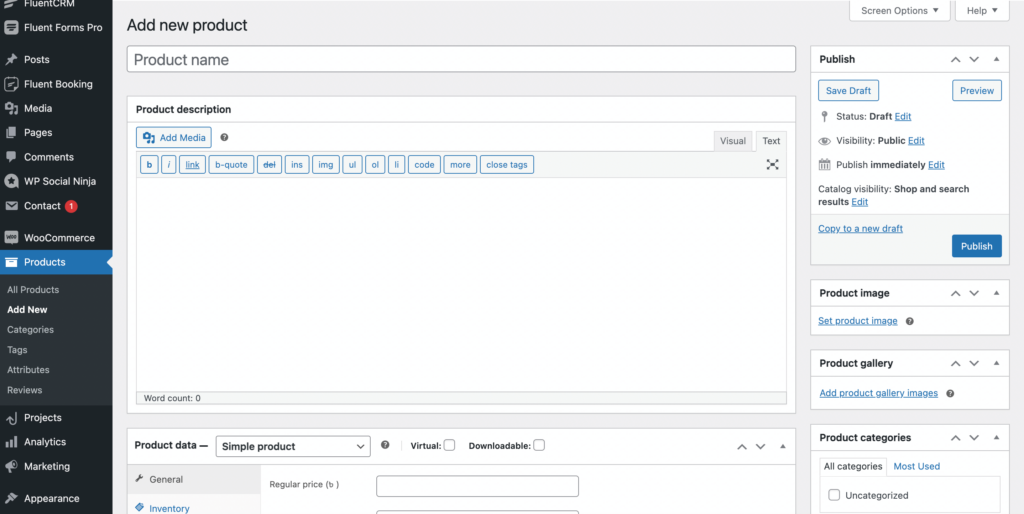
In this short space, I’d like to show the process of adding and managing products on WooCommerce:
- Navigate to your WooCommerce admin area
- Go to Products > All Products.
You can manage all your products here. Uploading products is also an easy task. You can import products or create one by yourself.
- Click the “Start Import” button and you can start importing products from a CSV file
Now let me show you how to create a product yourself.
- To do that, click on Products.
- Now click “Add New” or “Create Product”
- Add the product’s name, write some description & include images
- Click the publish button and you’re done
Wix
Similar to WooCommerce, Wix also allows you to add products and pages with friendly options.
But here’s an obstacle. Unlike WooCommerce, you can only add 15 photos to one product.
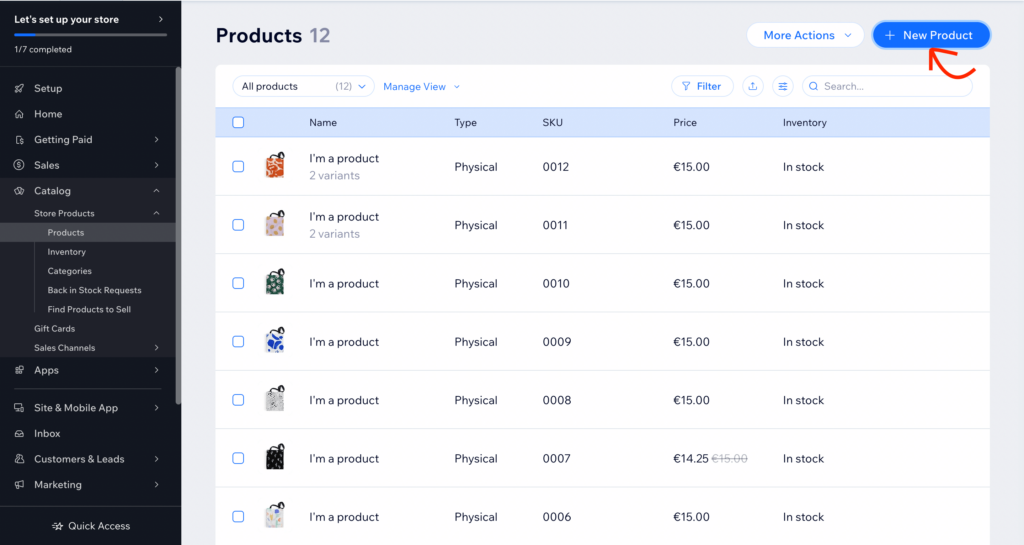
Wix also offers multiple options to customize the products. And, here I want to show you how you can manage products on Wix:
- First, go to your Wix dashboard
- Now, click Store Products
- You can see a list of all your products
- Here you can add new products, filter, and edit them
- Duplicate or delete a product by clicking the three dots on the right of each product
- You can also hide a product from your store
- Click the “New Product” button to add a new product
- Give your product a name, add visuals, mention pricing, and give inventory details
- Click the save once you’re done
Supported languages
Language plays a vital role in eCommerce websites. If users can purchase in their own language they’ll simply feel blessed. I’ll try to present you how Wix vs. WooCommerce works with different languages.
WooCommerce
Let’s start with WooCommerce. This popular eCommerce platform doesn’t offer multilingual options natively, but it surely has some superb options to translate.
There are some great WordPress translation plugins that include WPML, Polylang, TranslatePress, and more. Install one of these plugins and translate your website into multiple languages.
You can’t search with terms like “translation”, “multilingual”, etc.
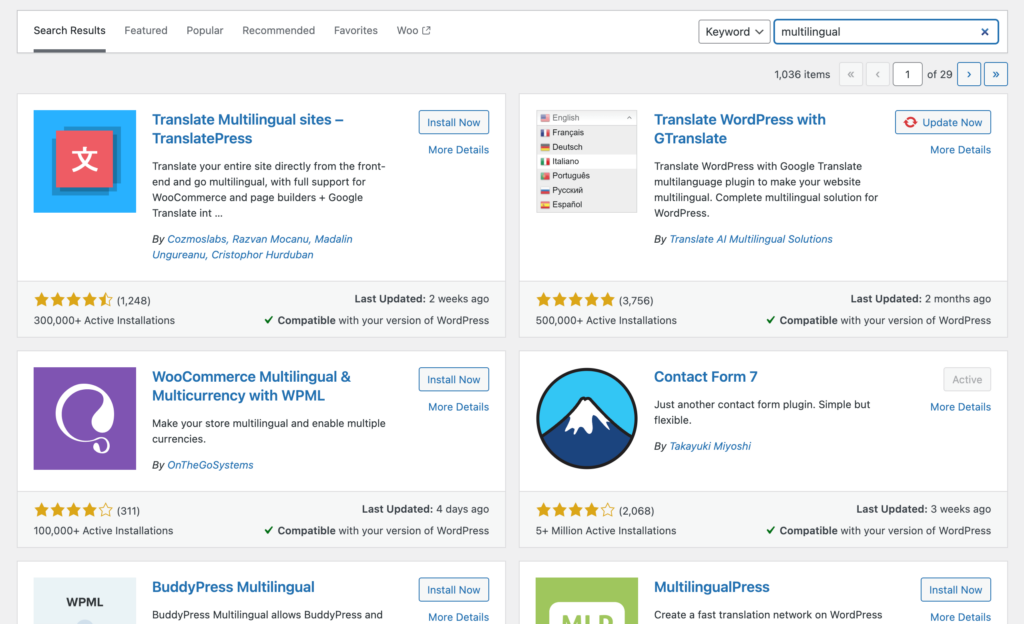
Have a quick look at what are the steps to follow:
- Go to the WooCommerce dashboard
- Click Plugins
- Now click Add New Plugin
- Search for a translation plugin
- Click Install Now
- Click Activate
- Now follow the setup instructions and that’s all
It’s also possible to change your site language from WooCommerce.
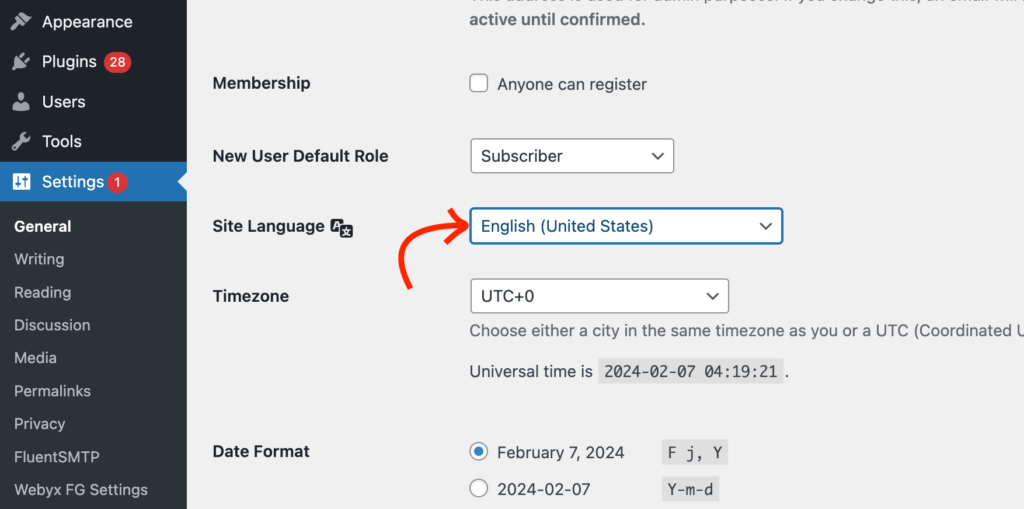
- Again, go to your WooCommerce dashboard
- Click Settings > General
- Now go to the “Site Language” option
- Select your preferred language from the drop-down list.
- Click Save changes
Wix
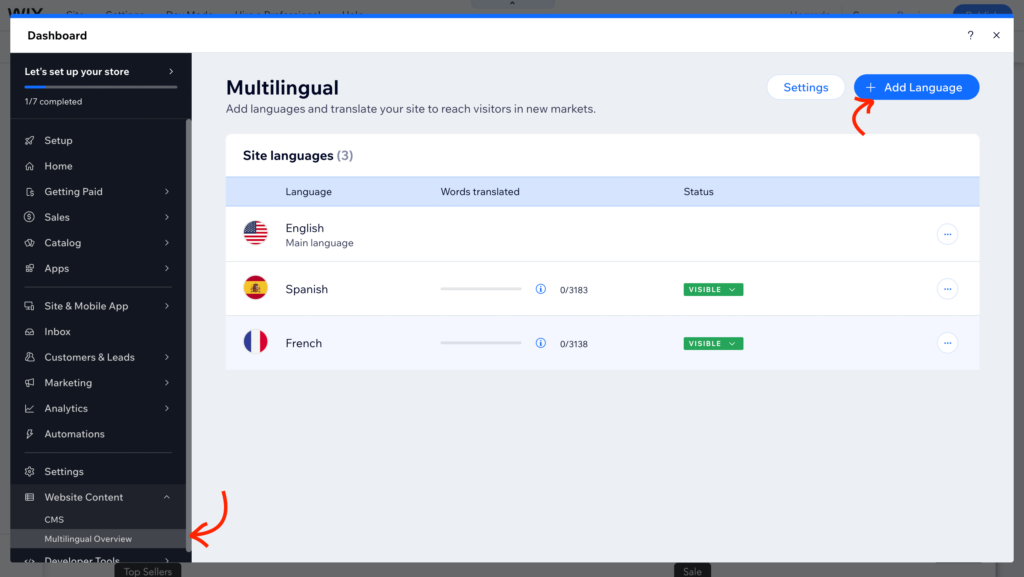
Wix comes up with dozens of language changing facilities. The list includes, but is not limited to Arabic, Bulgarian, Dutch, English, French, German, Greek, Norwegian, Polish, Portuguese, Romanian, and more.
You can set up the site language from Wix settings. Let’s see how to do that:
- Navigate to the Settings option from your site’s dashboard
- Go to General settings > Language & region
- Choose your preferred language from a chunk of the list
- Also, you may set your store’s currency from a list of more than 140 currencies.
Maintenance
Updates are required. There are always changing trends on the web and security faces new challenges. If your chosen platform provides regular updates, it means you’ll get a sophisticated tool all the time.
WooCommerce
WooCommerce regularly updates the software several times a year. You’ll see the notification on your dashboard, and you have to update it for your website.

The updates usually include security and bug fixes along with new features sometimes. With the expensive WooCommerce hosting option, you may expect an automated update, but it’s not a hectic process to update from your end.
Many times there may be a conflict with the plugins and themes you use. That’s why it’s highly recommended to thoroughly test a plugin or theme before installing it for WooCommerce.
Wix
The scenario is different with Wix. You couldn’t even know when the update happens because it’s delivered to your website without notifying you. I must say this is an advantage, especially for non-developers. You don’t have anything to worry about the updates.
What relevant topics do you expect from Wix updates? Besides security issues and bug fixes, Wix comes with new templates and apps regularly. So, yes, you can update your site with templates and apps while a little bit worrying about the quality of the freshly built items.
Blogging
Blogging is an integral part of an eCommerce site. Isn’t it?
It’s highly recommended marketing techniques to keep a blog section for your website.
But how do these popular eCommerce perform in terms of blogging?
WooCommerce
WooCommerce, on the other hand, comes with a native commenting option for WooCommerce users.
In addition, for blogging, WooCommerce offers a great opportunity to create and maintain stunning blogs. Since you’ll use WooCommerce inside WordPress, you’ll get all the facilities of WordPress and organize your blog section without any limitations.
On one point, I’ll keep Wix ahead of WooCommerce. It’s the free media library. With WooCommerce, you have to upload your media to the library and insert it when necessary.
Wix
Wix has blogging support but with the most basic features. You can use posts, categories, and labeling for creating blog posts. Well, a media archive is also available to store photos and videos.
Wix manages authors and allows you to create posts from mobile phones with an app called “Wix Blog.”
Wix is not as great as WooCommerce in terms of blogging and it doesn’t have a cool commenting feature. Users often complain that the comments give an opportunity for spammers.
Help and Support
What do you do when you get stuck? You ask for help. Right?
That’s why it’s important to get the right support at the right time. We’ll look into both platforms to see whether they offer support for a critical moment.
WooCommerce
WooCommerce is that big because of its community. A large community adds value to the entire WooCommerce user group. There are tons of useful blogs, videos, and discussions made by the community.
WooCommerce is an open-source platform and it’s available for free. That makes it clear that’s why this platform doesn’t have dedicated support.
That said, the extensive documentation, video tutorials, and articles help solve almost all the recurring problems, and the new ones eventually get the community’s attention.
But they produce documentation, video tutorials, and articles. That’s how users can resolve most of their issues. Most of the problems are recurring. But if you find a new problem, you can get help from the extensive community.
One last thing about help. There are hundreds of WooCommerce developers out there. If you need any customized support, you can always go and ask them to help you out.
Wix
Wix has exclusive support for its users no matter what issues they face using the platform. You can reach them by phone or email. They offer different working hours based on customers’ language.
But that’s not all. Wix offers a huge knowledge base for its customers where you can find many articles and video tutorials. Wix support gives it an edge over its competitors.
Combining all channels, Wix surely maintains great support and is willing to help customers when they need help. Not as large as WooCommerce, but you can also get articles and YouTube videos related to Wix tutorials.
WooCommerce vs. Wix: pricing & plans
Pricing is a crucial factor in choosing the right platform for creating your website. In the battle between WooCommerce vs. Wix, you need to be aware of the pricing.
WooCommerce
Simply put, WooCommerce is free, with no hidden charges. Of course, if paid themes and plugins interest you, you’d have to pay for them. Also, you will have to pay the hosting fee.
WooCommerce is free of cost, by the way. But that doesn’t mean you can do all the fantastic things without spending some money.
But where do you pay the bills?
Well, first of all, themes. For a gorgeous-looking website, you need to buy a professional theme that offers advanced customization.
Later, you have to pay for the addons (extra plugins) to extend the power of WooCommerce for the things that usually can’t be done with the default version.
One last mandatory thing is hosting. However, when you build your site you need to host it somewhere. WooCommerce offers a hosted service, you can avail of that, or you have to buy hosting from other places.
Wix
Wix offers four pricing plans for various kinds of websites. The pricing starts from $10/mo to $149/mo.
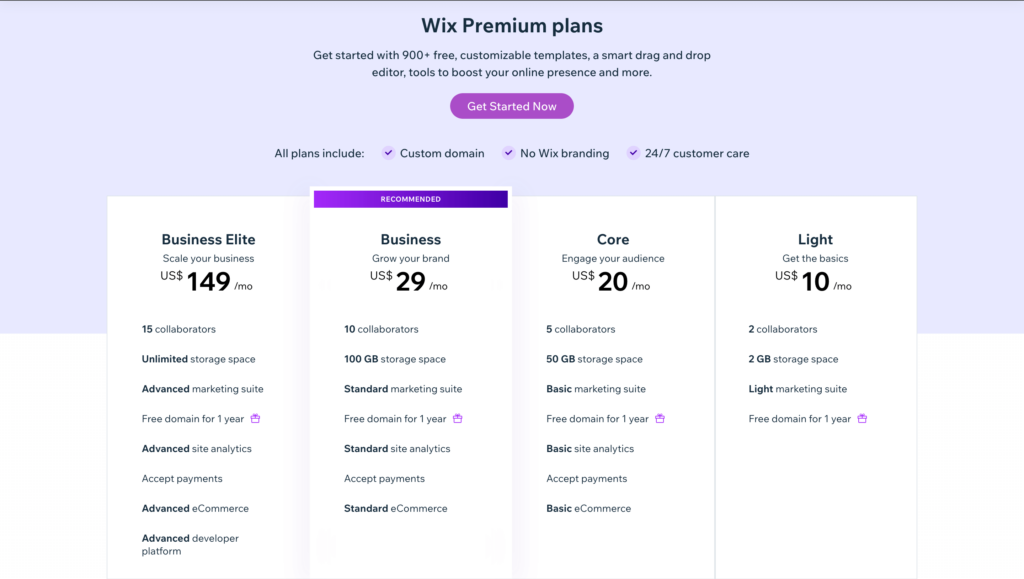
So, where does the pricing vary? It encompasses many things, including collaborators, storage capacity, video hours, analytics, and eCommerce.
For instance, you’ll get (free for one year) Site Booster and Events Calendar apps with the Core ($20/mo) to the upper plans.
Final verdict: which platform to choose?
That’s it from my end.
I’ve done with comparison of two most popular eCommerce platforms, and I believe I’ve given you enough information to make a decision.
On both platforms, you’ll get the option to create your ideal eCommerce shop with a lot of features.
While Wix comes up with a box of intuitive features including easy site builder, WooCommerce allows users to build an SEO-friendly and mobile-ready site.
My opinion is if you want to build a regular website, go for anyone. But for creating an online shop, I’d prefer WooCommerce.
Not only is WooCommerce easy to use, but you can get an abundance of tutorials online because the community is really large.
Another great aspect of WooCommerce is it has a ton of extensions available in the market.

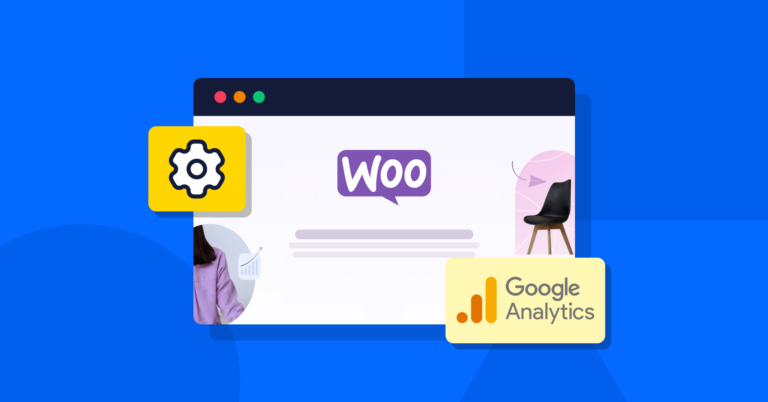
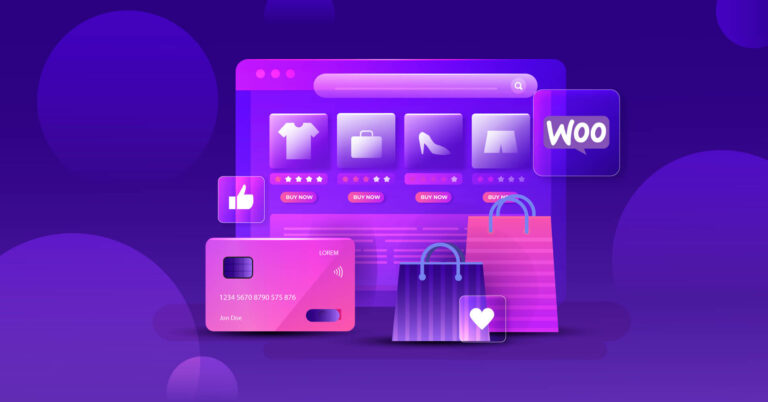
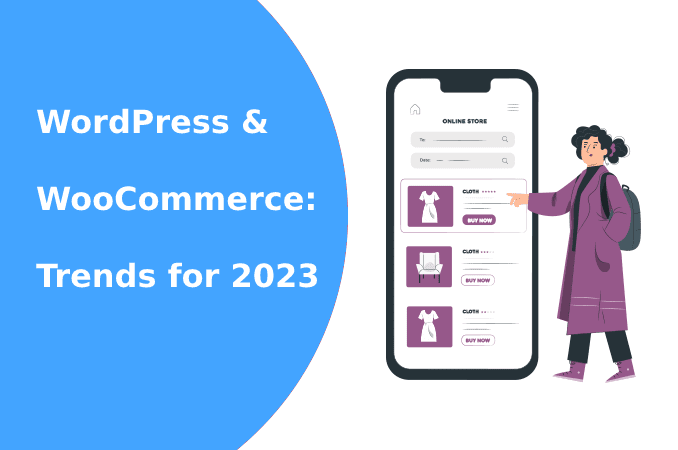

Leave a Reply
You must be logged in to post a comment.